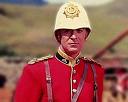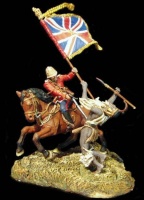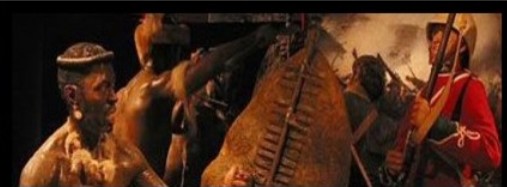| Latest topics | » Thrupps report to Surgeon General Wolfies  Today at 3:10 pm by SRB1965 » Studies in the Zulu War volume VI now available Yesterday at 11:12 pm by Julian Whybra » Brother of Lt Young Yesterday at 9:52 pm by Eddie » Isandhlwana unaccounted for casualties Yesterday at 3:24 pm by Julian Whybra » Absence of Vereker from Snook's Book Fri Oct 25, 2024 10:59 pm by Julian Whybra » William Jones Comment Tue Oct 22, 2024 11:31 pm by Eddie » Another Actor related to the Degacher-Hitchcock family Mon Oct 21, 2024 1:07 pm by Stefaan » No. 799 George Williams and his son-in-law No. 243 Thomas Newman Sat Oct 19, 2024 12:36 pm by Dash » Alphonse de Neuville- Painting the Defence of Rorke's Drift Fri Oct 18, 2024 8:34 am by Stefaan » Studies in the Zulu War volumes Wed Oct 16, 2024 3:26 pm by Julian Whybra » Martini Henry carbine IC1 markings Mon Oct 14, 2024 10:48 pm by Parkerbloggs » James Conner 1879 clasp Mon Oct 14, 2024 7:12 pm by Kenny » 80th REG of Foot (Staffords) Sun Oct 13, 2024 9:07 pm by shadeswolf » Frontier Light Horse uniform Sun Oct 13, 2024 8:12 pm by Schlaumeier » Gelsthorpe, G. 1374 Private 1/24th / Scott, Sidney W. 521 Private 1/24th Sun Oct 13, 2024 1:00 pm by Dash » A Bullet Bible Sat Oct 12, 2024 8:33 am by Julian Whybra » Brothers Sears Fri Oct 11, 2024 7:17 pm by Eddie » Zulu War Medal MHS Tamar Fri Oct 11, 2024 3:48 pm by philip c » Ford Park Cemetery, Plymouth. Tue Oct 08, 2024 4:15 pm by rai » Shipping - transport in the AZW Sun Oct 06, 2024 10:47 pm by Bill8183 » 1879 South Africa Medal named 1879 BAR Sun Oct 06, 2024 12:41 pm by Dash » A note on Captain Norris Edward Davey, Natal Volunteer Staff. Sun Oct 06, 2024 12:16 pm by Julian Whybra » Isandlwana papers he,d by the RE museum  Sun Oct 06, 2024 6:06 am by 90th » An Irish V.C. conundrum? Thu Oct 03, 2024 10:51 am by Julian Whybra » William Moore / William Potter 24th Regiment Thu Sep 26, 2024 3:04 pm by Dash » Stalybridge men in the 24th Thu Sep 26, 2024 2:24 pm by Dash » Grave of Henry Spalding Wed Sep 25, 2024 3:24 pm by Kenny » Thomas P Kensole and James J Mitchell Mon Sep 23, 2024 4:04 pm by Samnoco » flocking stands to historical accuracy Sun Sep 22, 2024 8:05 pm by GCameron » Private 25B/483 Joseph Phelan 1/24th Regiment Fri Sep 20, 2024 5:22 pm by Dash » Updated list of Zulu War Veterans who came to Australia or New Zealand Fri Sep 20, 2024 12:31 am by krish » A story regarding Younghusband's charge. Hearsay or a possibility?  Thu Sep 19, 2024 3:26 pm by Julian Whybra » Nine of the 24th Thu Sep 19, 2024 10:24 am by Julian Whybra » Colour Sergeant 2296 James Hannon Hawkins Thu Sep 19, 2024 8:00 am by Samnoco » S.S. Solway Campbell/O'Keefe/Quigley 24th Regiment Wed Sep 18, 2024 8:56 pm by Dash |
| October 2024 | | Mon | Tue | Wed | Thu | Fri | Sat | Sun |
|---|
| | 1 | 2 | 3 | 4 | 5 | 6 | | 7 | 8 | 9 | 10 | 11 | 12 | 13 | | 14 | 15 | 16 | 17 | 18 | 19 | 20 | | 21 | 22 | 23 | 24 | 25 | 26 | 27 | | 28 | 29 | 30 | 31 | | | |  Calendar Calendar |
|
| Top posting users this month | |
| Zero tolerance to harassment and bullying. | |
Due to recent events on this forum, we have now imposed a zero tolerance to harassment and bullying. All reports will be treated seriously, and will lead to a permanent ban of both membership and IP address.
Any member blatantly corresponding in a deliberate and provoking manner will be removed from the forum as quickly as possible after the event.
If any members are being harassed behind the scenes PM facility by any member/s here at 1879zuluwar.com please do not hesitate to forward the offending text.
We are all here to communicate and enjoy the various discussions and information on the Anglo Zulu War of 1879. Opinions will vary, you will agree and disagree with one another, we will have debates, and so it goes.
There is no excuse for harassment or bullying of anyone by another person on this site.
The above applies to the main frame areas of the forum.
The ring which is the last section on the forum, is available to those members who wish to partake in slagging matches. That section cannot be viewed by guests and only viewed by members that wish to do so. |
| Fair Use Notice | | Fair use notice.
This website may contain copyrighted material the use of which has not been specifically authorised by the copyright owner.
We are making such material and images are available in our efforts to advance the understanding of the “Anglo Zulu War of 1879. For educational & recreational purposes.
We believe this constitutes a 'fair use' of any such copyrighted material, as provided for in UK copyright law. The information is purely for educational and research purposes only. No profit is made from any part of this website.
If you hold the copyright on any material on the site, or material refers to you, and you would like it to be removed, please let us know and we will work with you to reach a resolution. |
|
| | British Uniform Fit For Purpose |  |
| | | Author | Message |
|---|
24th

Posts : 1862
Join date : 2009-03-25
 |  Subject: British Uniform Fit For Purpose Subject: British Uniform Fit For Purpose  Fri May 22, 2009 5:53 pm Fri May 22, 2009 5:53 pm | |
| Was the British uniform of 1879 adequate for the south African climate.
Today’s army has various uniforms which can be regulated to deal with the climate in question.
I would be Interested to know what material was used to manufacture the British uniform in those days.
Was the uniform replace and how often was it replaced taking into account the conditions it was worn in. And the biggest question has to be how did they manage to keep it looking presentable. |
|   | | John

Posts : 2558
Join date : 2009-04-06
Age : 62
Location : UK
 |  Subject: Re: British Uniform Fit For Purpose Subject: Re: British Uniform Fit For Purpose  Fri May 22, 2009 8:42 pm Fri May 22, 2009 8:42 pm | |
| Hi 24th here an extract from: CAMPAIGN LIFE IN THE BRITISH ARMY DURING THE ZULU WAR by Ian Best.
For the First Invasion, Lord Chelmsford had at his disposal seven Infantry Battalions; 2/3rd, 1/13th, 1/24th, 2/24th, 80th, 90th & 99th. Most of them had
experience of campaigning, if not fighting, against the Gaikas in the recent Frontier War and were well acclimatised and confident for the coming conflict.
Both officers and men were tanned and heavily bearded and their uniforms showed the rigours of campaigning. The men’s feet were hardened from
marching over rough broken terrain and they were in generally good physical health.
Campaign life also brought men and officers in closer proximity to each other and the other ranks were quick to spot a caring officer that they
could trust as well as those whose remoteness and indifference made them unpopular. Redvers Buller was an example of an officer who was popular and respected in that he shared all conditions with his men. Trooper George Mossop recalled that; "If we were lying in the rain, so was Buller. If we were hungry, so was he. All of the hardships he shared equally with his men."
After a long drought during 1877/78, the weather broke just as preparations were under way for the First Invasion. Regiments were moved from their
posts near the larger towns of Natal and the Eastern Cape and concentrated along the Zululand border at the three crossing points.
Here they lived under the less than weatherproof canvas of the large Army bell tent, which held fifteen men arranged around the centre pole like the
segments of a dart board. There were no issue groundsheets and the men had only a blanket or greatcoat to cover themselves. Often, on the march or
after the disaster at Isandlwana, there were no tents so the men slept in the open in all weathers. Small wonder so many became victims of chronic rheumatism.
The Zulu War was the penultimate campaign in which the British Infantry wore traditional red jackets. The exception were the 60th, who’s tunics were "rifle
green". Single breasted and made of a course serge, they were less elaborate and looser fitting than those worn in earlier campaigns. The collars and cuffs had a coloured patch in the regimental facing colour; the 24th, 88th and 94th wore green, the 3rd and 90th wore buff, 57th, 80th, 91st and 99th had yellow, the 58th wore black, the 4th and 21st wore dark blue, while the 60th had red. With the exception of the 91st Highlanders, who wore tartan trews, trousers were of a thick dark blue Oxford material with a thin red stripe down the outer seam of the leg and were worn either tucked into black leather gaiters or into the tops of heavy ammunition boots.
The blue Home pattern spiked helmet had given way to a white Foreign Service version worn without the star-shaped helmet plate or spike. This was
dyed in tea to a dun colour or a foul weather cover was worn in an effort to make it less conspicuous. The whole ensemble, however, was entirely
unsuitable for daily wear for a hard campaign in Southern Africa. With the exception of socks, there was no change of clothes, so after a short while "the
Pride of the British Army" looked and smelled like a band of vagrants. The officers, on the other hand, carried with them enough equipment to make
campaign life quite pleasant. They shared tents with no more than a couple of fellow officers, slept on camp-beds and relaxed in folding chairs. Their valises contained changes of clothing and some included cricket bats and pads, hunting guns and artist’s materials. Dress regulations were relaxed and they wore a mixture of uniforms. Jackets mostly favoured were the unlined frock, still heavily laced, or the more practical dark blue patrol jacket with its
elaborate black frogging across the chest. From photographs taken at the time, officers displayed the Victorians love of headgear by wearing anything
from the tropical helmet, the glengarry, the leather peaked forage cap to civilian wide-awake felt hats and straw boaters. As officers were mounted, the
usual footwear was the elegant black leather riding boot worn to the knee. Leather was also sewn to the seat and inside leg to prevent wear in the
saddle. |
|   | | | | British Uniform Fit For Purpose |  |
|
Similar topics |  |
|
| | Permissions in this forum: | You cannot reply to topics in this forum
| |
| |
| |
